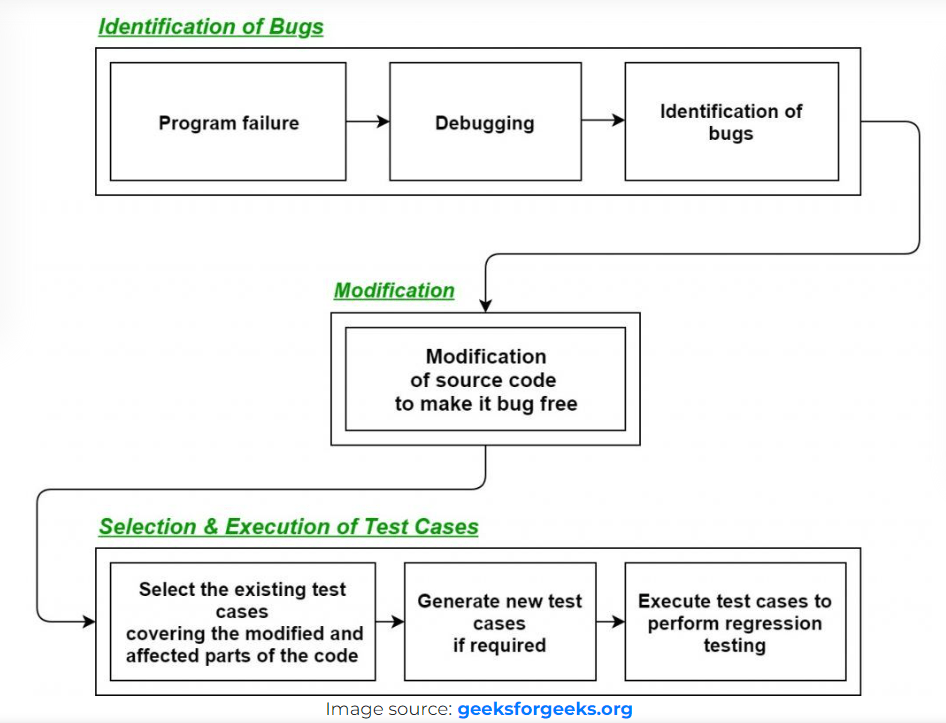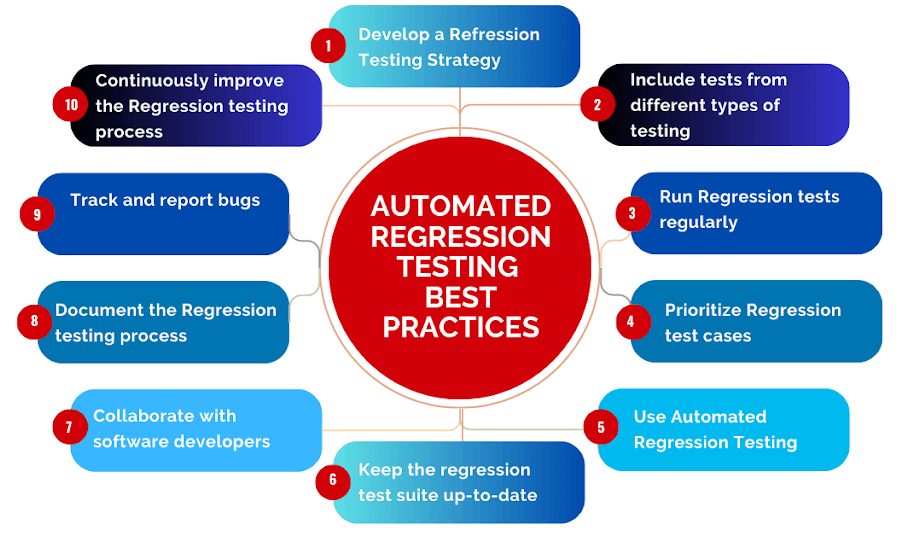Identifying bugs, flaws and fixing them is what software testing is all about. But more often than not, new bugs appear with updates, features or any anomaly. Automated Regression testing best practices is hence considered the best resort in such a situation. It ensures that after the QA team fixes the bug or updates a code, the probability of new bugs appearing is dealt with. Therefore, regression tests are carried out by all software product companies to maintain their quality posture.
Regression testing is performed after a software product has undergone any update, upgrade and it retests any portions of the product that might have been affected by the patch. It can be performed either manually or automatically by running a particular set of test cases, making it an essential component for producing high-quality software.
Regression Testing
Regression testing is a modified or updated computer program to ensure that previously developed and tested software features continue to function as intended. It aids in eliminating any risks associated with updated websites and software. A QA team carries out regression testing once the development team finishes its work.
Regression Testing Scenarios
- There is an update or more features
- Changes made to the existing specifications
- There is a flaw that has to be corrected
- Performance problems exist and need to be fixed

Regression Test Case Writing Techniques
1. Setting test case priorities: Setting test case priorities is based on the business effect and the critical and often used feature. The test suit will be cut down by prioritizing the test cases.
2. Case selection: You select the portions of the test suite that need to be repeated rather than running through all the tests again. These could then be subdivided into current and previous tests.
Automated Regression Testing Best Practices
Automated regression testing is a crucial step in the software testing process that ensures a software application’s existing features continue to function after any new modifications or updates have been made.
Even though the value of regression testing, carrying it out successfully and efficiently is a challenge. We’ve put together a list of 10 best practices to help with this problem. These can assist teams in creating a strategy that works and ensuring the caliber of their software product.
Regression testing is a robust method of continuously fixing bugs, but it takes a lot of effort. Because of this, it’s frequently a good idea to group your tests into suites that match to your program’s modules.

1. Create a Strategy
The choice of the most crucial test cases and the frequency should both be part of a clearly defined strategy. This plan should be based on the software application’s risk assessments and should be updated often.
2. Include Tests from Various Testing kinds
The regression test suite should include various kinds of tests such as functional tests, unit tests, and manual tests.
3. Regularly Execute Regression Tests
The regression test suite should be executed on a regular basis, ideally following each fresh update or release. This will guarantee that any new problems are discovered immediately and can be remedied.
4. Prioritize
Prioritize the test cases for regression in accordance with their significance and the application they will have. The most crucial features will be checked continuously as a result of this.
5. Automate
Using automation can drastically cut down on the time and work needed. Automated tools can also aid in increasing test coverage and enhancing test accuracy.
6. Maintain the Test Suite
Ensure that the regression test suite is consistently updated to take into account any modifications to the software program. This will lessen the chance that any problems will go unnoticed during testing.
7. Collaborate
Work together with software developers to make sure the regression test suite is in line with the software development process. This will make it easier to guarantee that any new changes are thoroughly tested.
8. Document the Regression Testing Process
Include the test cases and frequency in your procedure document. This will make it easier to assure consistency and easy replication of the procedure.
9. Track and Report Bugs
Keep a log of all bugs discovered and report them. This will make it easier to make sure that any problems are resolved correctly and that the software program is continually enhanced.
10. Keep Developing the Software Regression Testing Procedure
By examining the findings and making any necessary modifications, the regression testing procedure should be continually improved. This will make it easier to maintain the effectiveness and efficiency of the procedure.
With our model-based approach, software testing teams can simply create, manage, and carry out automated regression tests, which cuts down on the time and labor needed for manual testing. We help businesses identify, define and support a cost-effective strategy that enhances the precision and consistency of their tests and raise the overall standard of their software application by harnessing the automated regression testing best practices.



